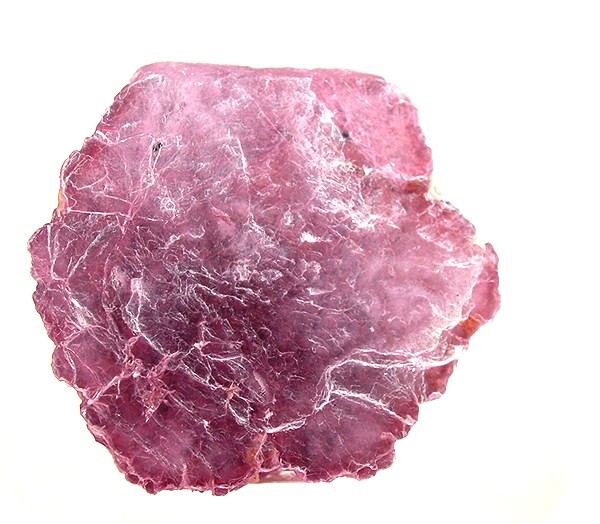
|
Minerals ~ Mica var.
Lepidolite
|
| Back ~ Home
~ Menu |

|
|
Lepidolite
Locality: Virgem da Lapa,
Jequitinhonha valley, Minas
Gerais, Southeast Region,
Brazil (Locality at
mindat.org) Beautiful, floater
crystals of lepidolite! Many
of us normally dismiss this
mineral as "matrix" but these
stand on their own merits as
fine crystal specimens. In
person, very lustrous and
quite beautiful as they are a
deep hue of lavender-purple.
2.4 x 2.1 x 0.7 cm
Photo Credit: Rob Lavinsky,
iRocks.com – CC-BY-SA-3.0
|
|
Mica
~ variety Lepidolite
Lepidolite is a lilac-gray or
rose-colored member of the mica group of
minerals with formula
K(Li,Al,Rb)2(Al,Si)4O10(F,OH)2. It is the
most abundant lithium-bearing mineral and
is a secondary source of this metal. It is
a phyllosilicate mineral and a member of
the polylithionite-trilithionite series.
It is associated with other
lithium-bearing minerals like spodumene in
pegmatite bodies. It is one of the major
sources of the rare alkali metals rubidium
and caesium. In 1861 Robert Bunsen and
Gustav Kirchhoff extracted 150 kg (330 lb)
of lepidolite and yielded a few grams of
rubidium salts for analysis, and therefore
discovered the new element rubidium.
It occurs in granite pegmatites, in some
high-temperature quartz veins, greisens
and granites. Associated minerals include
quartz, feldspar, spodumene, amblygonite,
tourmaline, columbite, cassiterite, topaz
and beryl.
Notable occurrences include Brazil; Ural
Mountains, Russia; California, United
States; Tanco Mine, Bernic Lake, Manitoba,
Canada; and Madagascar.
SOURCE
|
|
|
|
|
TOP
|
